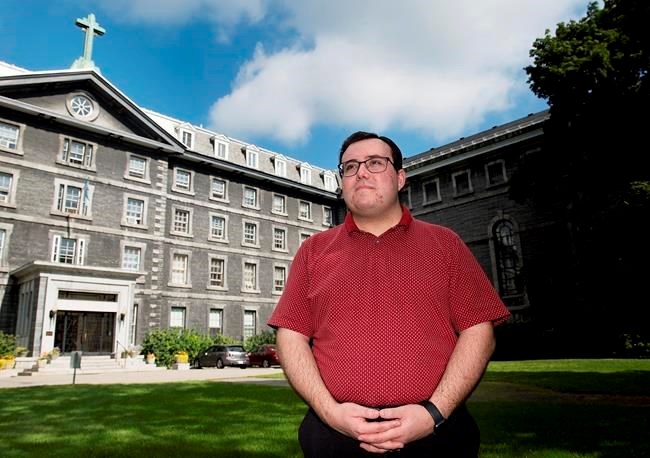MONTREAL — Like many post-secondary students preparing for the new school year, Francis Leroux is packing boxes and getting ready to move.
But the 23-year-old trainee priest and his roughly 20 seminarian colleagues are also preparing for a major downsize.
After decades of dwindling interest in the priesthood, the priests-in-training are leaving the historic halls of Montreal's Grand Seminaire — which has a legacy dating back nearly to the city's founding — and moving to smaller quarters across town.
The move is hardly a surprise, given the decline in influence of the Catholic church, which once dominated Quebecers' education and social lives. The Seminaire, which once trained up to 200 priests at a time, now receives a small handful of new candidates each year to take on the eight-year training process.
Leroux said it's been "a privilege" to live and train in a building with so much history, "with priests and professors that belonged to religious orders that helped found Montreal, helped sustain the city in its early years."
While the seminarians have lived in the building since it was completed in 1857, there have been Sulpician priests on the site since the 1670s, when they carried out missionary activities. The Sulpicians have been responsible for training new priests since the 1840s.
While he'll miss the majestic chapel and the building's history, Leroux said there are advantages to the new site, such as not having people scattered all over a too-large building.
Their new home is a 60s-era former nuns' residence in the Rosemont-Petite-Patrie borough, complete with a small chapel, community spaces and room for about 20 priests.
"In the new place we'll be able to live a little more all together, share a little more community time," Leroux said.
Leroux said he's eager to move from the foot of Mount Royal to a much busier neighbourhood, allowing the seminarians to have much more community contact.
The Grand Seminaire is hardly the only grand religious building with dwindling occupants, according to Montreal Archbishop Christian Lepine.
Many religious communities, including the Sulpicians who own the Grand Seminaire, he said, have found the costs to sustain vast and historic buildings unsustainable.
"Financially, if you have a big building you have to fill, and you cannot use it in all it's capacity, it becomes a burden," Lepine said.
The debate on what happens to the buildings is "never-ending," Lepine said. Many religious communities see an opportunity to continue their legacies by maintaining these grand, aging buildings — even as their congregations shrink.
Plan A, he said, is usually to keep the building while seeking out partnerships, especially those connected to the church's traditional missions of health care, education or community organizations.
That could mean leasing space to schools, organizations that serve the vulnerable, or even hospitals, he said.
The Sulpicians, long-time educators of priests, appear to be following that tradition by leasing parts of the Grand Seminaire to schools.
"They announced some time ago that their priority is education, because that's their field," Lepine said.
Plan B is generally to transform the building into social or community housing, he said.
"Faith also expresses itself in social causes," he said. "It takes time, but sometimes we can have projects that are good for people."
As for the seminarians, Lepine said the move isn't really a sad one. Rather, they're going "back to their beginnings" by moving closer to the community they serve, he said.
"The Sulpician tradition when they started was in a parish, and the building (was) beside the parish, so it was involved in the life of the people," he said. "So it's going back to that."
This report by The Canadian Press was first published Aug. 23, 2020.
Morgan Lowrie, The Canadian Press



